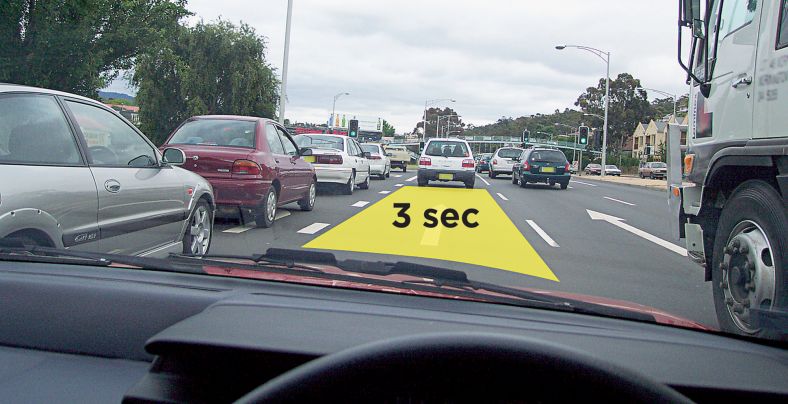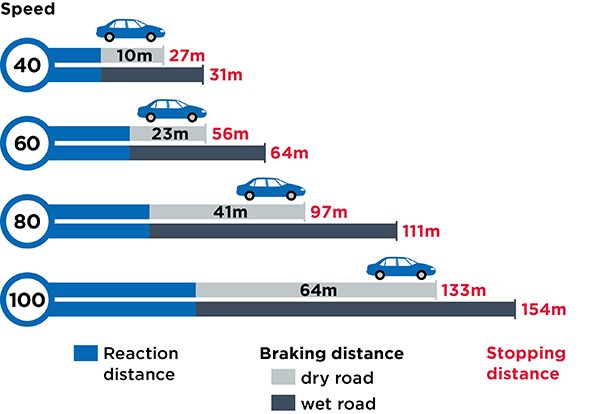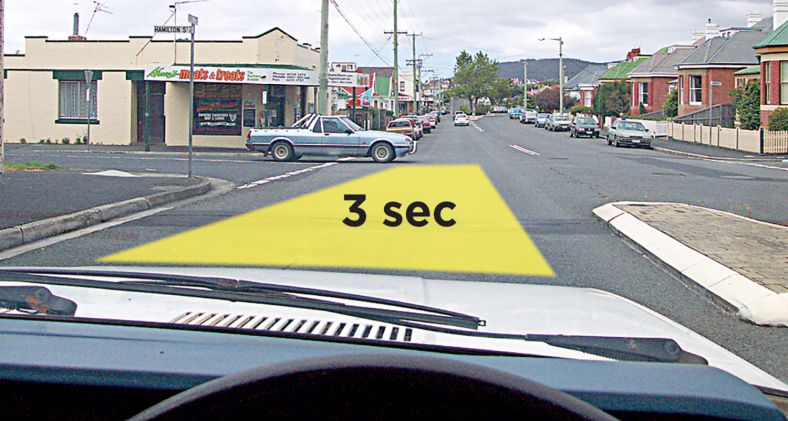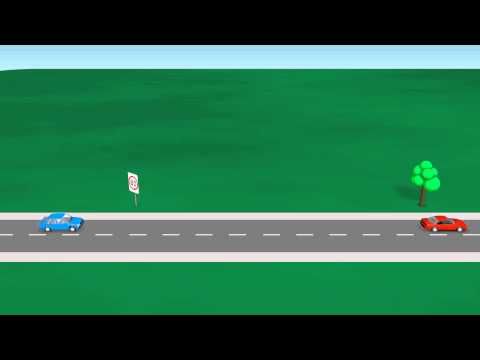Safe stopping distance
Rules and advice on keeping a safe distance from the vehicle in front of you. Many crashes on NSW roads could be avoided by safer driving.
What is safe stopping distance?
Keeping a safe distance between your vehicle and the vehicle in front (a three second gap) is essential for safe driving. Your speed affects the distance you need to stop safely. When travelling at higher speeds, increase the distance to allow at least five seconds so you have enough time to react and brake.
The rules
You must keep enough distance between you and the vehicle travelling in front so you can, if necessary, stop safely to avoid colliding with the vehicle.
If you’re driving a long vehicle (over 7.5m, including towed vehicles), you must drive at least 60m behind other long vehicles, unless you’re:
- driving on a multi-lane road
- driving in a built-up area
- overtaking.
Penalties
You can get a fine and demerit points if you drive too close to another vehicle.
How to keep a safe distance
Road positioning
Road positioning means keeping enough room around your vehicle to avoid hazards. This is also referred to as buffering.
This can mean keeping to the left at the top of a hill or a sharp corner so oncoming vehicles can drive past you safely. Or it can mean not getting too close to parked cars so you can avoid hitting opening doors.
Always check your mirrors before changing your position on the road.
Crash avoidance space
As a driver, you should adjust your speed and position to keep a safe distance from vehicles in front and to the sides of your vehicle. This is called your crash avoidance space.
Many of the crashes that happen each day in NSW could be avoided if drivers kept their crash avoidance space.
To work out the crash avoidance space to the front of your vehicle, you need to take into account two key factors – reaction time and response time:
- Reaction time is the time a driver needs to see and understand a situation, decide on a response, and then start to take action. A driver who is fit and alert and not affected by alcohol, drugs or fatigue, needs about 1.5 seconds to react to a hazard. At higher speeds it increases to about 2.5 seconds.
- Response time is the time a driver needs to take action. Most people need at least 1.5 seconds to respond, for example, to brake.
In good driving conditions, most people need a 3-second crash avoidance space (often called the 3-second gap) to react and respond to a situation safely and avoid a crash.

You should increase your crash avoidance space to 4 or more seconds when driving in poor conditions, such as on unsealed (dirt or gravel), icy or wet roads, or at night.
You can help other vehicles, such as trucks and buses, to keep their crash avoidance space by not cutting in front of them.
Working out your crash avoidance space
To calculate your crash avoidance space when driving:
- Select an object or mark on the left-hand-side of the road, for example, a power pole, tree or sign.
- As the rear of the vehicle in front of you passes this object, count 3 seconds (‘1 thousand and 1, 2 thousand and 2, 3 thousand and 3’).
- If your vehicle passes the object after you’ve finished counting, this is enough crash avoidance space.
If your vehicle passes the object before you finish counting, you’re following too closely. Slow down, and repeat the count until there’s a 3-second gap between you and the vehicle in front.

Driving speed and crash avoidance space
The 3-second gap changes depending on your speed. The faster you’re going, and in wet weather the longer it takes to stop and avoid a crash. The combined effects of reaction and braking times in dry conditions is illustrated in the table below.

Most drivers underestimate the distance needed to stop their vehicle. When you drive just 5km/h over the speed limit, you need much further to stop, even if you brake hard.
If there’s potential for another vehicle or hazard to enter your crash avoidance space, slow down to create a buffer, and prepare to stop if necessary. It’s important to keep your crash avoidance space for all potentially hazardous situations, including blind corners and crests.

Scanning
Scanning is essential for safe driving. Scanning is keeping your eyes moving, checking in one area for a couple of seconds and then moving your eye to another area.
When scanning look:
- in the distance
- at the road surface
- to your left and right
- regularly at your mirrors and instruments.
Safe stopping distance video

Road rules: safe distance
Revise how to keep a safe following distance in this short Transport video animation.